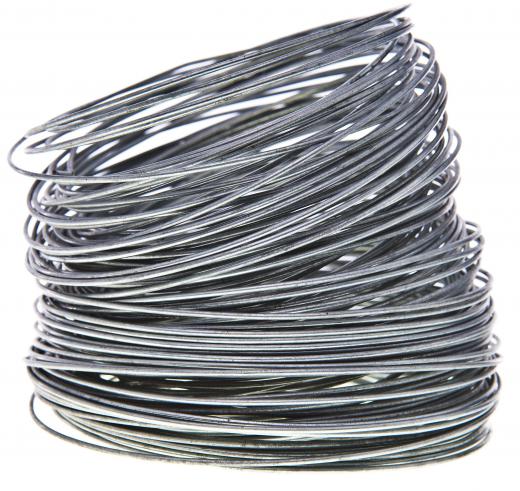What Is a Base Metal?
A base metal can be defined in primarily two different ways. When dealing with analytical chemistry, a base metal is any metal that oxidizes easily in the presence of air and reacts with hydrochloric acid to produce gasses such as hydrogen. Metals used in chemical research include lead, iron, and nickel. From a manufacturing or base metal mining standpoint, such metals are those most commonly employed in building infrastructure and equipment by industry, and include steel, aluminum, and copper. Another distinguishing fact for base metals is that they usually have more practical uses than precious metals, such as gold and silver that are valued for their luster and as electroplated coatings for jewelry and other ornamental objects.
The three most widely used base metals on Earth as of 2011, in descending order, are iron to form hundreds of varieties of steel, aluminum, and copper. Steel is used in virtually all heavy industry, and aluminum has become an essential metal for aircraft and automobile manufacturing. Copper is the most common form of metal used in piping and electrical wiring due to its malleability, high electrical conductance, and relative abundance.

Four other important base metal elements used by industry include: zinc, lead, nickel, and tin. Zinc's primary function is as a galvanized coating on steel, as it doesn't corrode when exposed to air like steel will over time. There remains an enduring demand for lead as a key component of storage batteries for cars, other types of batteries, and for various uses such as solder in circuitry. Nickel is used to strengthen steel and it has corrosion-resistant applications like that of zinc. Tin, like many other base metal elements, is a key component of metal alloys, which are often centered around a steel formula.
Not all base metal elements are actively traded on the market, but they are tracked by a base metal index. Steel has so many varieties and chemical formulations that it is usually tracked as a group within a category of diversified metals, and aluminum is tracked separately. Since many metals are also recovered from scrap, base metal prices and supply-versus-demand figures are also broken down by the scrap market as opposed to the mining industry. The rarer and more valuable the metal, usually the higher it trades on exchanges, with cobalt being the highest-valued base metal on the London Metal Exchange as of 2011, followed closely by molybdenum. Metals that trade at the lower end of the commodity spectrum include aluminum alloys, lead, and zinc.
AS FEATURED ON:
AS FEATURED ON:











Discuss this Article
Post your comments